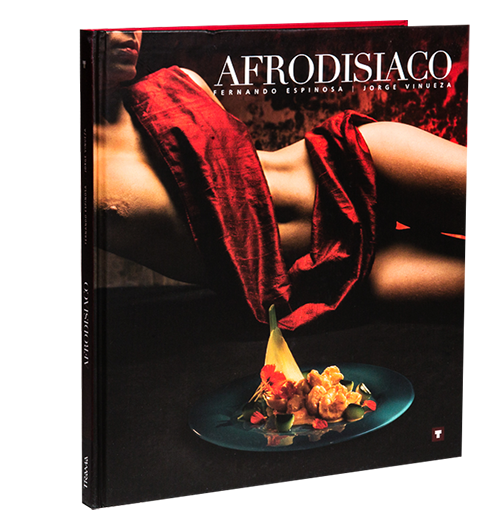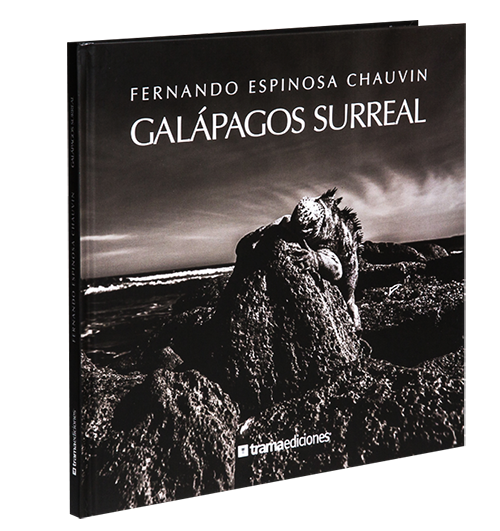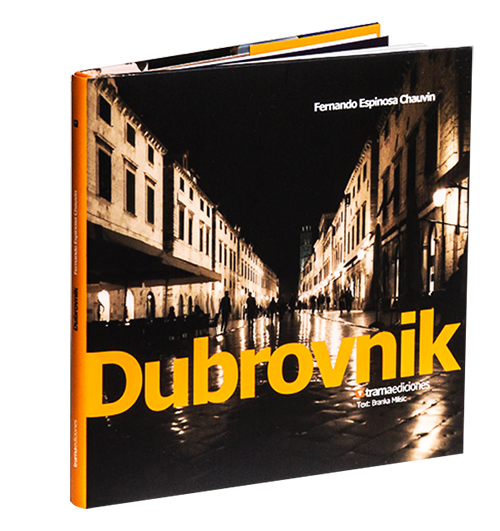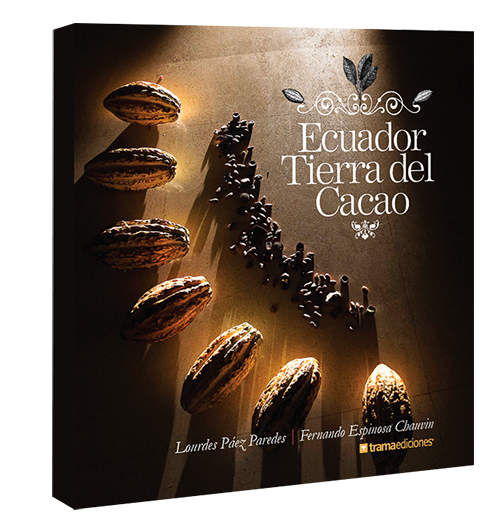
Afrodisiaco
"Afrodisiaco" is a photography/art/cookbook showing food as an aphrodisiac. The setting is a very old theater that was partially destroyed by fire. The sets are a mixture of burnt walls and red velvet theater curtains and remains of orchestral instruments destroyed in the fire. The red backdrop and destruction from the actual fire are symbolic of the fire of passion--both its beauty and its danger. The erotic sight of the beautiful models presenting the elegant food completes the aphrodisiac message of the book. All of the food was prepared by international chefs and the book includes the recipes and closeup shots of the plates.
The book is 12 x 11 inches and contains approximately 60 images and 27 recipes. A brief foreword, from Susana Cordero (writer and member of "Real Academia Española"), an introduction from the famous poet Edwin Madrid. And it was done by Fernando Espinosa in collaboration with the photographer Jorge Vinueza from Ecuador.
Everything in the book project was with the 22-mega pixels leaf back and Hasselblad cameras, and it was printed in semimatte Epson paper in 20x24 aprox for the exhibit and for other smaller venues in velvet fine art Epson or velvet Hahnium.
Recently released in the United States.
Book and photographs are for sale: Printed in 20 x 24 Epson Premium Semimatte Photo paper, No Border. And also printed in Epson Velvet Fine Art 13x19 inches with aprox 1-2 inch white margin around the picture, with signature in pencil in lower right hand corner.

Galapagos Surreal
For some time now, I contemplated doing a series of photographs of the Galapagos Islands. My difficulty was finding a unique perspective in which to present this wonderful archipelago. There are many books and photographs cataloging the unique wildlife species that exist only in the Galapagos: the marine iguanas, the flightless cormorant and the blue footed boobies. But in my many trips to the Galapagos, I became fascinated with the landscape itself, the raw beauty and almost surreal surroundings that these animals call home. I chose black and white as the medium to avoid the distraction that colors can bring, and to focus the viewer's perspective on the shapes and textures of the plant life, the rock formations and the sky. Of course, the wildlife and occasional tourist find there way into my photographs because they are intrinsic to this ecosystem and become part of the surroundings and the interrelationship between the animals, humans and the physical landscape as part of the underlying theme. The Galapagos is a harsh and unforgiving environment that at the same time forms a paradise for many species of birds and wildlife; it is this seeming contradiction that forms the body of my work.
To achieve the desired effect, some of the photographs were taken using an infrared camera; the rest were done with ordinary cameras and black and white settings. The photographs were taken during different seasons and during different trips as it is difficult photographing many parts of the Galapagos due to the restrictions the National Park places on visitors in order to preserve this wonderful site.
Book and photographs are for sale: Printed in 20 x 24 Epson Premium Semimatte Photo paper, No Border. And also printed in Epson Velvet Fine Art 13x19 inches with aprox 1-2 inch white margin around the picture, with signature in pencil in lower right hand corner.

Dubrovnik, Croacia
As I walked through the walls of the ancient city, Dubrovnik provoked inside of me, many sensations. With the passage of time, I attempted to capture these feelings in this book, which is at once a proposition, a search and a photographic essay.
The city with its textures and history can set the visitor's pace has it did on me. It is walled town with no army or king; always a place of attraction, beauty, mystery and desire. Dubrovnik was a point of balance between the West and the East. A gateway to a place of magic, which provocatively, always transport the visitor through time. Walking the Stradum, stepping on every Stria stone, one daydreams as if this sensation has always been there, for everyone and throughout time. Mentioning the Stria stone is not a mere detail, it's the raw material so often sought by empires to build what was the most beautiful, most precious building stone. It´s magnificence is felt in its silky texture, in the gloss of the polished stone, its color of liquid sand, somewhere between beige and cream that changes magically by time of day.
All this frames and the dreamlike tone on which I wanted to give the book. A succession of images marked by a rhythm of cadenza and pauses, trying to show the most pure essence of the place, more than being its precise guide. I used the Photographs as representations of these sensations and feelings, offering to preserve them in our memory along with the city itself.
Recently released in the United States.
Book and photographs are for sale: Printed in 20 x 24 Epson Premium Semimatte Photo paper, No Border. And also printed in Epson Velvet Fine Art 13x19 inches with aprox 1-2 inch white margin around the picture, with signature in pencil in lower right hand corner.

Split, Croacia
Fernando Espinosa is a New York Base photographer, with several books on his makings, His most impressive work is his exhibits museums from all around the world Branka Milisic Croatian and Split born has wrote several books including Dubrovnik and now Split she is currently writing others from other parts of Croatia

Ecuador Tierra del Cacao
ECUADOR TIERRA DEL CACAO es una obra que rescata datos sobre el cacao de hace 5300 años hasta el presente, presentando a la Pepa de Oro como un legado de Ecuador al mundo, ya que los más antiguos vestigios de consumo de este fruto tropical que hoy cautiva paladares en todas las latitudes tuvo su origen en este territorio.
Lo histórico está presente preguntándose ¿porqué el cacao propició la independencia de la colonia española, la revolución liberal y la apertura del país hacia el mundo?, nos cuenta como fue el esplendor de los Gran Cacao, familias que dominaron el mercado global; nos acerca con visión cosmopolita al tercer boom cacaotero ecuatoriano con imágenes espléndidas que muestran al Ecuador como proveedor de cacaos finos y hogar ancestral de su domesticación

